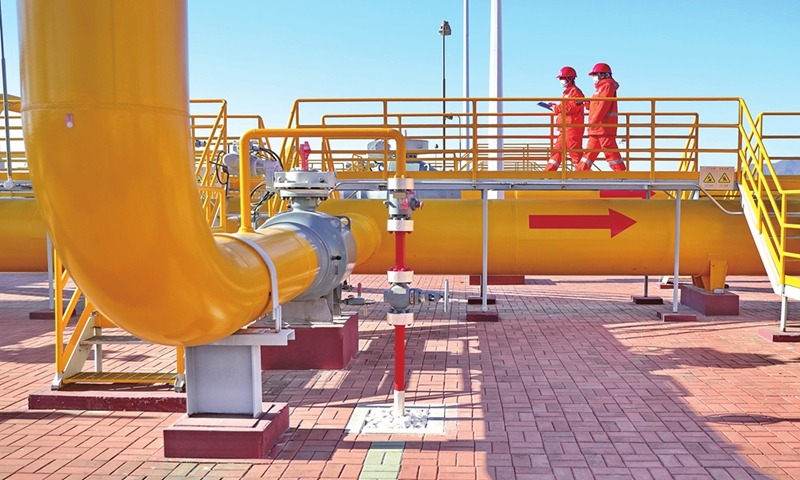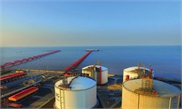Gas channeled into national pipeline network tops 140 million cubic meters per day: PipeChina

Staff members from PipeChina conduct a daily inspection of the China-Russia east-route natural gas pipeline in Qinhuangdao, North China's Hebei Province on November 1, 2022, aiming to strengthen inspections of the route and ensure the daily consumption of gas for households in the Beijing-Hebei-Tianjin region of North China. Photo: VCG
Eleven gas storage facilities linked to China’s oil and gas pipeline network had launched gas extraction as of 8 am on Monday, with the daily amount of gas being channeled into the pipeline network exceeding 140 million cubic meters, enough to meet the increasing need for natural gas in North China, according to state-owned energy pipeline giant PipeChina.
As the country’s important seasonal peak shaving infrastructure, gas storage facilities play a part in leveling out peak gas use during the winter. All gas storage facilities have exceeded their extraction tasks ahead of the heating season, with cumulative gas extraction hitting 16 billion cubic meters, PipeChina’s oil and gas control center said on Monday.
That suggests the maximum daily gas extraction could amount to 180 million cubic meters, meeting hundreds of millions of households’ demand during the winter peak season.
Since the start of winter, major gas storage facilities across the country have switched to the supply guarantee mode. PipeChina’s oil and gas control center said it has pushed the facilities to switch between gas injection and extraction while strengthening gas quality monitoring to avoid the fallout from gas quality fluctuations on pipeline production and operation.
The center has kept close watch on the weather, communicated with and coordinated among the country’s three oil giants, and tapped planning simulation technology and natural gas pipeline balance forecast technology to precisely predict balanced supply and demand.
On November 15, northern China rang in the winter heating season. Accordingly, a national unified network of PipeChina officially started to ensure supplies with gas deliveries of more than 600 million cubic meters per day, the centrally administered pipeline giant disclosed in mid-November.
As part of its efforts to ramp up construction of the trunk pipelines, a section of the China-Russia east-route natural gas pipeline connecting Anping, North China's Hebei Province with Tai’an, East China's Shandong Province, was put into operation in September. Another section of the pipeline linking Tai’an and Taixing in East China’s Jiangsu Province is scheduled to be operational before the end of December, according to PipeChina.
It is expected that the southbound pipeline capacity will add 20 million cubic meters a day, tremendously beefing up supplies to the Circum-Bohai Sea region and East China.
PipeChina was set up in December 2019 for the investment, construction and interconnection of major oil and gas pipelines. The goal is to have a national network that transports crude oil, refined oil and gas.
Global Times


